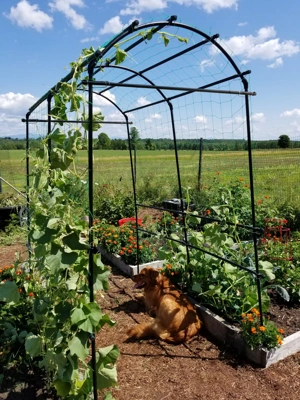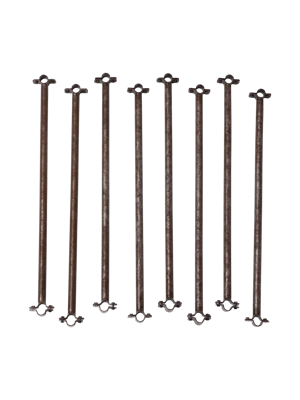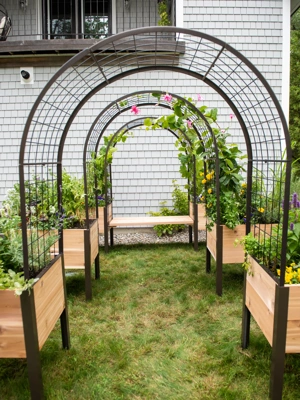How to Grow Loofah Sponge Gourds
Did you know you can grow your own natural loofah sponges?


Loofah, also spelled Luffa, are in the cucurbit family—along with cucumbers, melons, squash, and other gourds—and grow on long vines. They require a long, hot growing season. For those of us with shorter summers, we recommend starting luffa seeds indoors under grow lights, about a month before the last frost date, and then transplanting into the garden. If you have a long growing season, you can directly sow the seeds in the garden.
Luffa can grow into very long vines, so it's best to provide them with strong supports to climb. Arches covered with luffa can create an inspiring focal point in the garden!
Luffa plants produce beautiful yellow flowers. Once flowers are pollinated, the luffa fruit will form quickly. When young and tender, the fruit can be eaten – its flavor and texture are quite similar to zucchini squash. But if you want to grow luffa to make your own bath, kitchen, or craft sponges, leave the fruits to grow big. The longer they grow, the more fibrous their interior gets. If your season is long enough, wait until they turn brown and dry on the vine. In areas with shorter growing seasons, pick the gourds before the first frost and let them dry indoors in an area with good air flow.

 When the skin turns brown and crackly, it’s time to peel them.
When the skin turns brown and crackly, it’s time to peel them.The seeds will dry as the luffa dries. When you peel the gourd, shake out the seeds and save them for next season (store them in a cool, dry, dark place until you're ready to plant).
Once peeled, you may need to give the luffa a little more time dry, and then you can use them as a natural exfoliant in the bath, or as a gentle scrubber in the kitchen.

If you make your own soap, you can place luffa slices in silicone molds, pour the melted soap over them and create a bevy of natural exfoliants. These make heartfelt gifts too!
PLUS if you're trying to reduce plastic consumption, growing luffa is a great way to create a supply of your own natural sponges. It’s also a beautiful vine that is fun to grow. Give it a try!
NOTE: Luffa are susceptible to squash bugs, so be diligent in scouting for them or their eggs. If you see squash eggs or adults, remove them early by hand-picking them and dumping them in soapy water. You can also use Neem as a natural deterrent.
Last updated: 12/20/2022
Print this Article:
Related items
Get the Dirt
Stay up to date on new articles and advice. Please fill out the information below.












